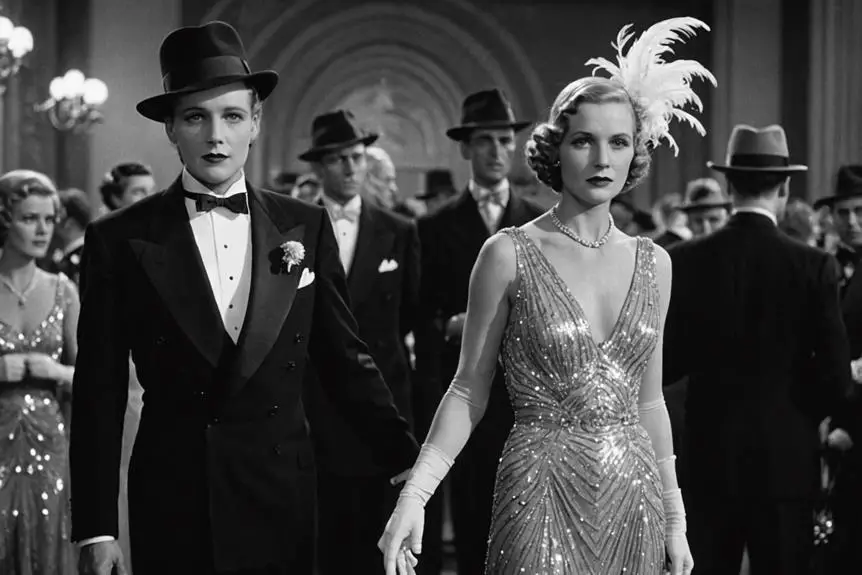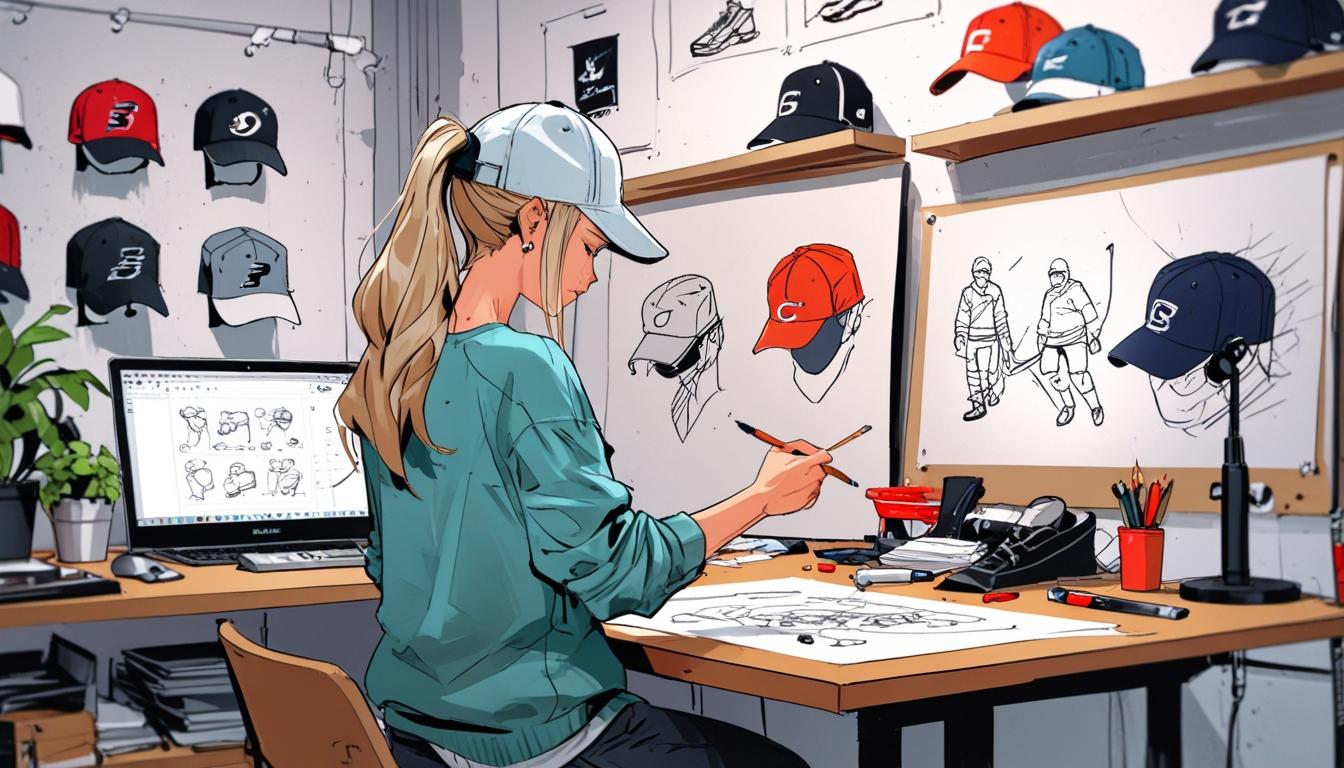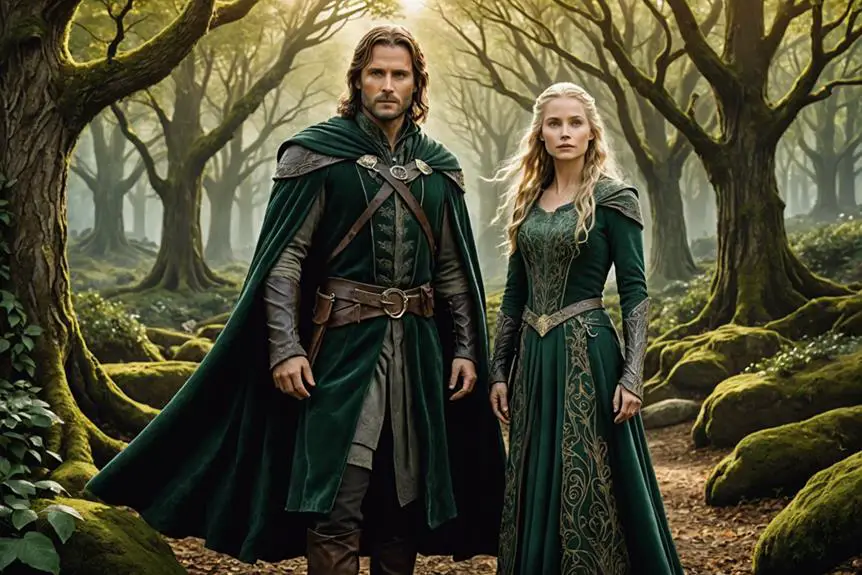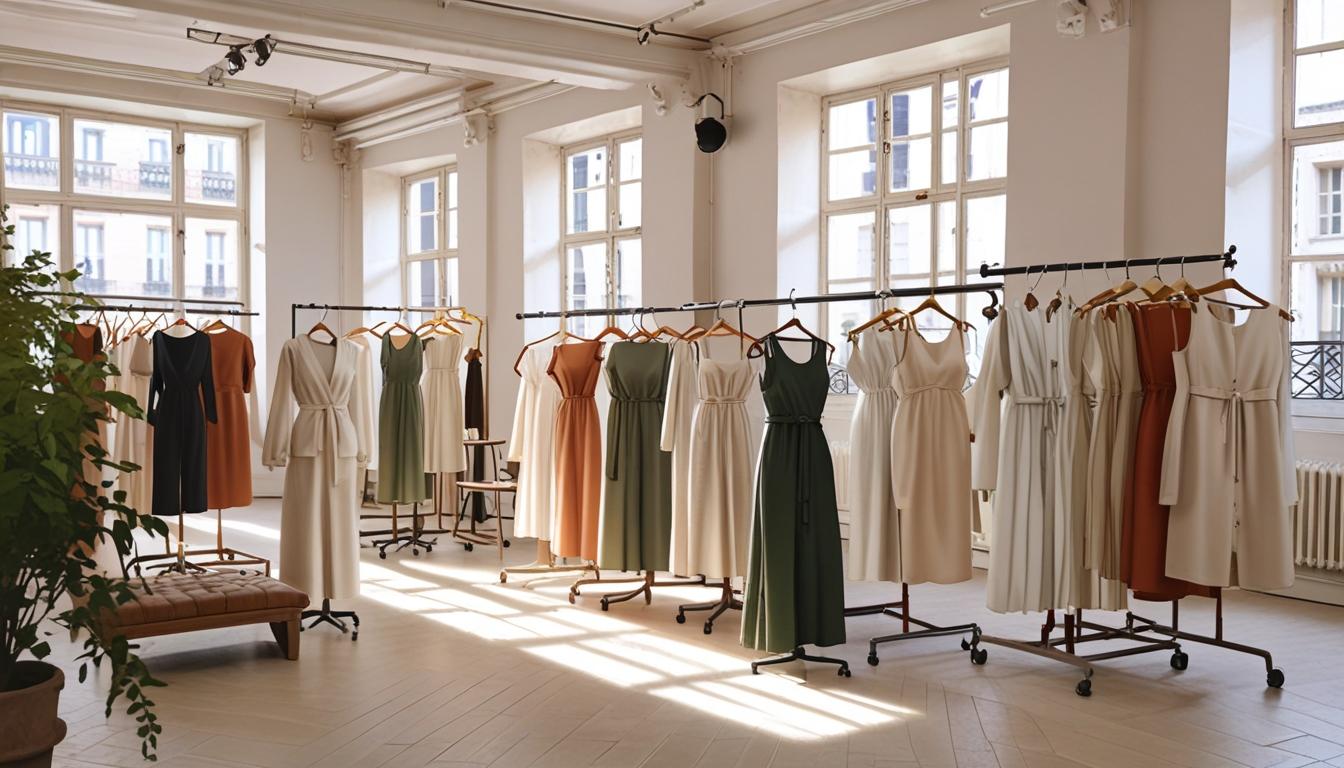The silhouette of a bias-cut gown hangs like a whisper of elegance from a bygone era, inviting you to explore the iconic fashion pieces of the 1930s. This decade transformed women's wardrobes, showcasing designs that celebrated both femininity and practicality. From the nipped waist of the Letty Lynton dress to the allure of black chiffon evening gowns, each piece tells a story. But what truly defined this era wasn't just the garments themselves; it was the cultural shift that influenced them. Let's uncover how these elements intertwined to shape a timeless aesthetic.
Overview of 1930s Fashion

The 1930s fashion scene marked a dramatic shift from the straight lines of the previous decade, embracing a more defined silhouette that celebrated the natural curves of the female form. As a woman maneuvering this vibrant era, you'd find dresses that beautifully hugged your body, thanks to the innovative bias cut popularized by designer Madeleine Vionnet. This revolutionary technique allowed garments to flow with your movements, offering both comfort and elegance, a stark contrast to the restrictive styles of the 1920s.
Eveningwear became a highlight of 1930s fashion, featuring long hemlines and daring back designs that epitomized Hollywood glamour. Stars like Jean Harlow and Bette Davis set the stage for an iconic style that many aspired to replicate.
However, the Great Depression didn't hold back creativity; instead, it sparked a movement toward affordable ready-to-wear clothing. With advancements in synthetic fabrics like rayon, stylish attire became accessible to women from various socio-economic backgrounds, allowing everyone to indulge in the magic of fashion.
Accessories also played a significant role in completing your look, as silk scarves, gloves, and hats became must-have items in every wardrobe. The 1930s fashion landscape was a blend of practicality and elegance, reflecting a desire for escapism during tough times.
As you explore this decade, you'll discover a rich tapestry of styles that not only defined an era but also empowered women to express themselves through their fashion choices.
Key Women's Fashion Pieces
Key women's fashion pieces from the 1930s reflect a blend of practicality and elegance, capturing the spirit of the era. One standout garment is the bias-cut gown, popularized by the innovative designer Madeleine Vionnet. This style revolutionized women's fashion by hugging the body and allowing for fluid movement, making it a staple for evening wear.
Similarly, the Letty Lynton dress, with its nipped waist and full skirt, sold over half a million copies in 1932, proving its mass appeal and connection to Hollywood star styles.
During the Great Depression, floral feedsack dresses emerged as a resourceful choice, crafted from repurposed animal feed sacks. These dresses highlighted women's ingenuity while maintaining a sense of style.
On a more casual note, knitted sweaters became essential daywear, often worn fitted and popularized by Hollywood stars like Lana Turner, showcasing a shift toward chic yet comfortable clothing.
For formal occasions, black chiffon evening dresses adorned with intricate beading epitomized the glamour of the era. Inspired by the elegance of film starlets, these dresses showcased elaborate designs that captivated audiences.
Together, these key pieces illustrate the remarkable evolution of women's fashion in the 1930s, blending resourcefulness with a flair for the dramatic.
Whether you're channeling the grace of a bias-cut gown or the casual charm of a knitted sweater, the fashion of this decade continues to inspire admiration and creativity in modern wardrobes.
Influential Designers of the Era
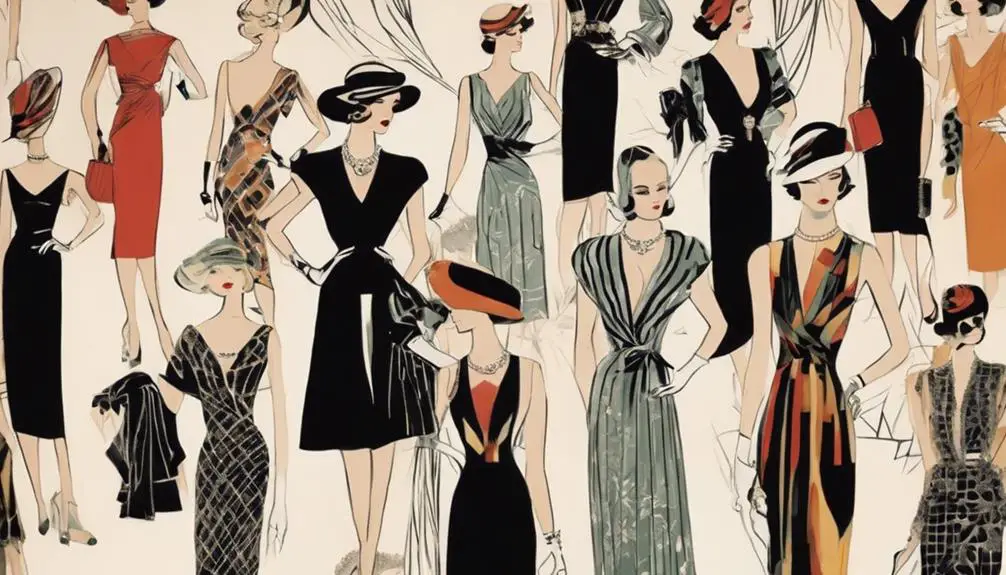
Influential designers in the 1930s shaped the fashion landscape with their innovative approaches and unique visions. One of the most notable figures, Madeleine Vionnet, revolutionized women's wear with her groundbreaking bias-cut designs. This technique allowed garments to gracefully hug the body, emphasizing fluidity and elegance, liberating women from restrictive undergarments.
Similarly, Elsa Schiaparelli brought a whimsical touch to fashion, collaborating with surrealist artists to create iconic designs like the lobster dress, while boldly using vibrant colors and unique embellishments.
Coco Chanel played a pivotal role in transforming women's wardrobes, introducing the little black dress, which symbolized a new era of comfort and practicality. Her use of relaxed jersey fabrics made chic, feminine style accessible to all women.
Meanwhile, Edward Molyneux became renowned for his sophisticated evening gowns, which combined classic tailoring with modern elegance. His pieces often featured luxurious fabrics and intricate details, encapsulating the glamour of the decade.
Lastly, American designer Mainbocher, based in Paris, gained fame for his chic, tailored styles, particularly evening gowns that accentuated the natural waist and offered flowing lines.
Each of these designers left an indelible mark on 1930s fashion, creating iconic designs that still influence style today. Their innovative ideas and commitment to elegance not only defined the era but also paved the way for future generations of fashion enthusiasts.
Whether through bold colors, luxurious fabrics, or revolutionary silhouettes, these influential designers captured the spirit of a transformative decade in fashion history.
Impact of Hollywood on Style
Hollywood's dazzling allure transformed the fashion landscape of the 1930s, as starlets like Jean Harlow and Greta Garbo captivated audiences with their stunning on-screen styles. These Hollywood starlets became fashion icons, setting trends that women everywhere enthusiastically embraced.
One of the most significant influences was the rise of bias-cut dresses that beautifully emphasized curves, allowing everyday women to feel glamorous and sophisticated. This era also saw the emergence of luxury brands, such as Chanel, which vintage items represent historical significance in fashion, further elevating the desire for high-quality pieces.
The "Sweater Girl" phenomenon, popularized by Lana Turner in "They Won't Forget," marked a pivotal shift toward form-fitting clothing, making it clear that women wanted to mirror the chic looks of their favorite actresses. Movies showcased extravagant evening gowns and stylish day dresses, creating a demand for ready-to-wear versions that captured the essence of the glamorous attire seen on screen.
This shift made high fashion more accessible and desirable for the average woman. Costume designers, like the legendary Edith Head, played an essential role in shaping these trends. Their creative visions brought iconic looks to life, inspiring women to emulate the styles of beloved film stars.
Additionally, accessories became integral components of wardrobes, with cloche hats and elegant gloves reflecting the sophisticated tastes of Hollywood's elite. In this cinematic world, fashion wasn't just about clothing; it was about expressing a lifestyle, a sense of identity, and a connection to the glitz and glamour of the silver screen.
Hollywood's impact on style during the 1930s was profound, leaving an indelible mark that continues to influence fashion today.
Accessories That Defined the Decade
The 1930s brought a fresh wave of accessories that truly defined the decade, making outfits come alive with personality and flair. Among the standout pieces were cloche hats, which became an iconic symbol of the era. These close-fitting hats, often crafted from felt or straw, elegantly framed the face, complementing the feminine silhouettes popular at the time.
Gloves also played a significant role in both day and evening attire. Elbow-length styles became essential for formal occasions, while shorter versions added sophistication to everyday wear. Pairing gloves with your outfit elevated your look, showcasing your attention to detail.
Costume jewelry surged in popularity, allowing fashion-forward women to express themselves without breaking the bank. Characterized by bold colors and stunning Art Deco designs, these pieces offered a touch of glamour to any ensemble, making them a must-have accessory.
Footwear trends during the decade embraced comfort and style with Oxfords and Mary Jane shoes. Featuring broader and lower heels, these shoes were perfect for everyday wear, giving you the best of both worlds.
Finally, handbags became essential accessories, often made from leather or fabric and adorned with elaborate embellishments. Not only did they serve practical purposes, but they also made fashionable statements that completed your outfits beautifully.
With these accessories, the 1930s showcased a unique blend of elegance and everyday practicality, ensuring that each woman could express her individuality while embracing the spirit of the decade.
